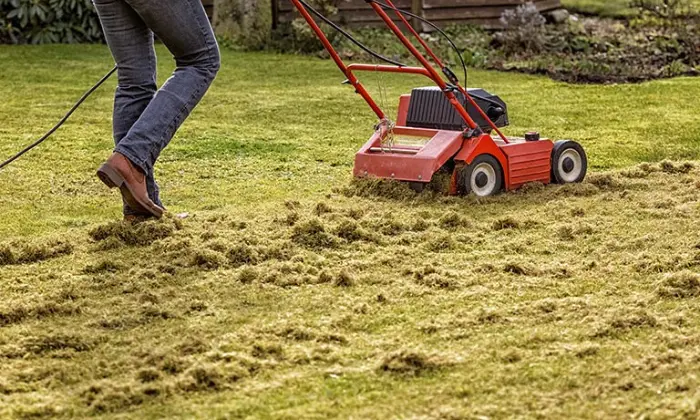Are you dreaming of a vibrant, healthy lawn that turns heads in your neighborhood? Well, it’s time to scarify the hidden gem of lawn care scarification. In this guide, we’ll delve into the crucial question of when to scarify lawn for optimal results, along with essential tips on how to do it effectively.
Why Scarify Your Lawn?
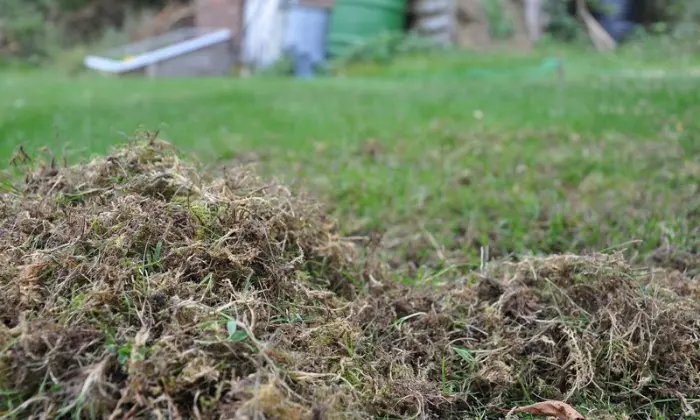
Scarification isn’t just about aesthetics; it’s about nurturing the health and vitality of your lawn. By removing thatch, moss, and debris, scarification allows your grass seeds to breathe, absorb nutrients, and thrive. Say goodbye to patchy, lackluster turf and hello to a vibrant, resilient lawn that’s ready to withstand whatever Mother Nature throws its way.
Understanding Scarification
Scarification is the process of using specialized tools or machines to comb through your lawn, lifting and removing layers of thatch, moss, and debris. This not only clears the surface but also opens up the soil, promoting better airflow, water penetration, and nutrient absorption for your grass roots. It’s like giving your lawn a refreshing breath of fresh air!
When to Scarify Lawn

Timing is everything when it comes to scarifying your lawn. Spring and autumn emerge as the prime seasons for scarification, offering optimal conditions for your turf to recover and flourish. But how do you know when exactly to scarify? We’ll provide you with expert guidance based on climate, weather patterns, and lawn conditions, ensuring you make the most of this crucial lawn care practice.
Scarifying in spring
Spring marks the awakening of nature, and it’s the perfect time to kickstart your lawn’s growth. Aim to scarify your lawn in the early spring, preferably when the soil is neither too wet nor too dry. This timing allows your grass to recover and flourish during the upcoming growing season.
Scarifying in autumn
As the leaves start to fall and temperatures cool down, autumn presents another ideal window for scarification. Aim to scarify your lawn in late autumn, after the last mowing of the season. This timing helps prepare your lawn for the winter months ahead, ensuring it emerges stronger and healthier in the spring tines.
Tools for Scarification

Armed with the right tools, scarification becomes a breeze. From manual electric scarifiers to gasoline-driven models, we’ll explore the pros and cons of each, helping you choose the perfect tool for your lawn’s needs. With the right equipment in hand, you’ll be well-equipped to tackle even the toughest thatch and moss with ease.
When not to scarify
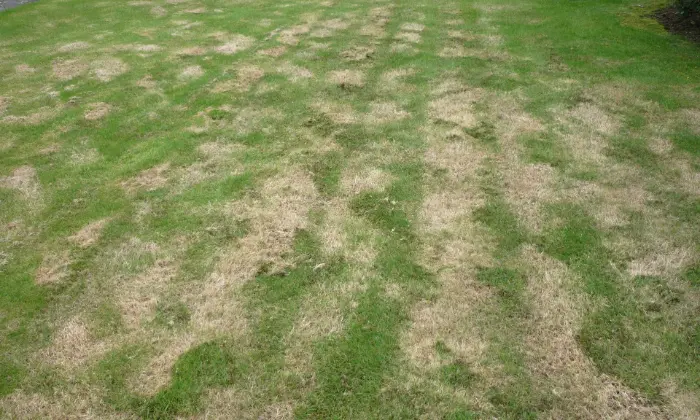
While scarification is a powerful tool in your lawn care arsenal, there are times when it’s best to hold off. Avoid scarifying during periods of extreme heat or drought, as this can stress your grass further. Similarly, refrain from scarifying newly seeded or sodded lawns, as they need time to establish themselves.
Lawn Scarifiers from Robert Complete Care

Are you tired of battling with stubborn thatch, moss, and debris that are choking the life out of your lawn? Look no further than Robert Complete Care’s range of lawn rake scarifiers, designed to rejuvenate your turf and unlock its full potential. Express farewell to dull grass and hello to a rich, green rug that will be the envy of your area.
Lawn Care Routine
Robert Complete Care’s lawn scarifiers are not just tools; they’re game-changers. Our scarifiers use advanced technology and expert craftsmanship to deliver exceptional results every time. Whether you’re dealing with a small patch of turf or an expansive lawn, our scarifiers make light work of even the toughest thatch and moss.
How Does Scarifier Work?
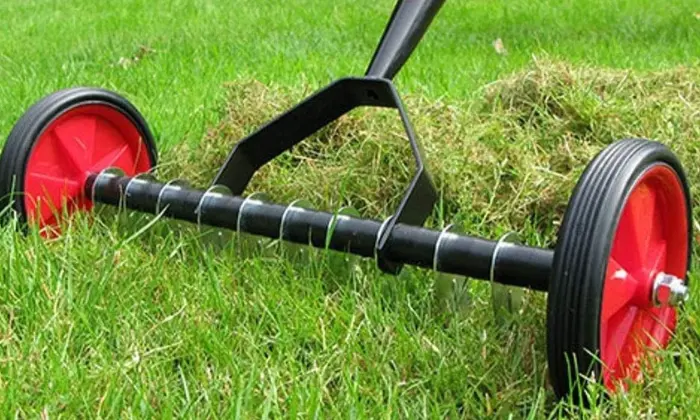
At its core, a scarifier is a specialized tool designed to rejuvenate and maintain healthy lawns by removing moss and debris from the surface of the grass. Unlike traditional lawn mowers, which simply trim the grass blades, a scarifier penetrates deeper into the turf, addressing underlying issues that can hinder grass growth and health.
Benefits of Scarification
Scarification offers a multitude of benefits for your lawn, including improved nutrient absorption, enhanced root development, and increased resistance to pests and diseases. By removing dead grass and moss, scarification also creates a healthier environment for new grass growth, resulting in a thicker, lusher lawn over time. Additionally, scarification helps to prevent waterlogging and compaction, ensuring optimal soil health and drainage.
How to Scarify a Lawn
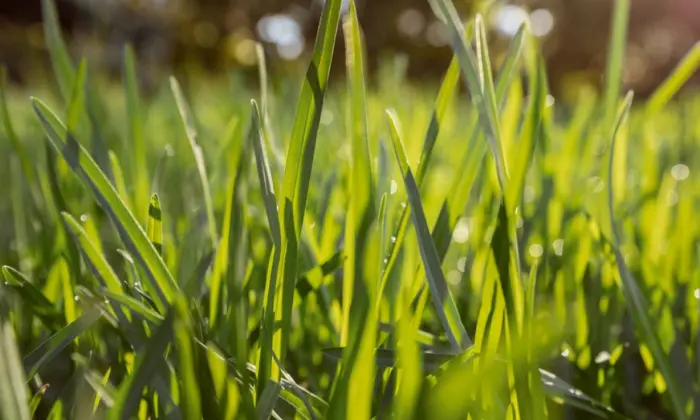
Scarifying your lawn is a crucial step in maintaining its health and vibrancy. By removing thatch, moss, and debris, you create an optimal environment for grass growth and root development.
Step-by-Step Guide to Revitalize Your Turf
Follow these simple steps to scarify your lawn effectively:
Assess Your Lawn: Before you begin scarifying, take a close look at your lawn to identify areas of thatch buildup, moss invasion, or compacted soil. This assessment will help you determine the severity of the problem and the extent of scarification needed.
Choose the Right Time: The timing of scarification is critical for optimal results. Aim to scarify your lawn during the growing season, either in early spring or late autumn. Avoid scarifying during periods of extreme heat or drought, as this can stress the grass and hinder its recovery.
Prepare your equipment: Gather all the necessary tools for scarifying, including a scarifying rake, manual scarifier, or powered scarifier, depending on the size and condition of your lawn. Ensure that your equipment is clean, sharp, and in good working condition before you begin.
Mow the Lawn: Before scarifying, mow your lawn to a slightly lower height than usual. This will make it easier to remove thatch, moss, and debris during the scarification process.
Scarify in Multiple Directions: When scarifying, work in multiple directions across the lawn to ensure thorough coverage. This will help loosen and lift the thatch, moss, and debris from different angles, allowing for more effective removal.
Adjust the Depth: Adjust the depth of scarification based on the severity of the problem and the condition of your lawn. Start with a shallow depth and gradually increase if necessary, being careful not to damage the grass roots.
Collect Debris: As you scarify, use a rake or lawn sweeper to collect the loosened thatch, moss, and debris. Dispose of the debris properly to prevent it from suffocating the grass or spreading to other areas of the lawn.
Finish with Aeration: After scarifying, consider aerating your lawn to further improve soil drainage and promote healthy grass growth. Use a lawn aerator to create small holes in the soil, allowing air, water, and nutrients to penetrate deep into the grass.
Follow Up with Maintenance: Once you’ve scarified and aerated your lawn, follow up with regular maintenance to keep it healthy and vibrant. This includes watering, fertilizing, and overseeding as needed to encourage strong, lush growth.
Monitor and Adjust: Finally, monitor the condition of your lawn regularly and make any necessary adjustments to your scarification routine. By staying proactive and attentive to your lawn’s needs, you can ensure long-term health and beauty for your turf.
Conclusion
In conclusion, the quest for a lush, green lawn, or scarification, emerges as a game-changer. By knowing when to scarify your lawn and how to do it right, you can unlock its full potential. Whether it’s spring’s touch or autumn’s preparation for the colder months, timing is key. Your neighbors will surely envy the vibrant beauty of your scarified lawn. Feel free to Contact Us
FAQs
What Is Scarification, And Why Is It Necessary For My Lawn?
Scarification, also known as dethatching, is the process of removing thatch, moss, and debris from the surface of your lawn. Thatch buildup can create a barrier that prevents essential elements like water, air, and nutrients from reaching the grassroots, leading to poor lawn health. Scarification helps to break up this layer, promoting better airflow, drainage, and nutrient absorption, resulting in a healthier, more vibrant lawn.
When Is The Best Time To Scarify My Lawn?
The optimal timing for scarification depends on factors such as grass type, climate, and current lawn condition. Generally, scarifying in early spring or fall is recommended, when the grass is actively growing and can recover quickly after the process. Avoid scarifying during periods of extreme heat or drought, as well as too late in the fall when your lawn may be more susceptible to winter damage.
How Do I Know If My Lawn Needs Scarification?
Signs that your lawn may benefit from scarification include a buildup of thatch, moss, or debris on the surface, compacted soil, poor drainage, and overall lacklustre lawn health. Robert Complete Care offers professional lawn assessment services to help you determine if scarification is necessary for your lawn.
Can I Scarify My Lawn Myself, Or Should I Hire A Professional?
While it’s possible to scarify your lawn yourself using specialized equipment, it can be a labour-intensive and time-consuming task, especially for larger lawns or those with significant thatch buildup. Hiring a professional lawn care service like Robert Complete Care ensures that scarification is performed efficiently and effectively, saving you time and effort while achieving optimal results.
What Other Services Does Robert Complete Care Offer Besides Scarification?
In addition to scarification, Robert Complete Care offers a comprehensive range of lawn care services, including fertilization, weed control, aeration, overseeding, and more. Our holistic approach to lawn care ensures that all aspects of your lawn’s health are addressed, helping you achieve the lush, healthy lawn you desire.
How Often Should I Scarify My Lawn?
The frequency of scarification depends on factors such as grass type, soil condition, and maintenance practices. Generally, scarifying once or twice a year is sufficient for most lawns, with timing determined by the specific needs of your lawn. Robert Complete Care can provide personalized recommendations based on your lawn’s unique characteristics.
Will Scarification Damage My Lawn?
When performed correctly by trained professionals, scarification should not damage your lawn. However, it’s essential to follow proper techniques and timing to minimize stress on the grass. Robert Complete Care’s experienced lawn care technicians are skilled in performing scarification safely and effectively, ensuring the health and integrity of your lawn.
How Soon Will I See Results After Scarification?
The timeframe for seeing results after scarification can vary depending on factors such as grass type, weather conditions, and the severity of the thatch buildup. In general, you can expect to see improvements in lawn health and appearance within a few weeks to a month after scarification. Consistent maintenance and proper lawn care practices will help maximize the benefits of scarification over time.

